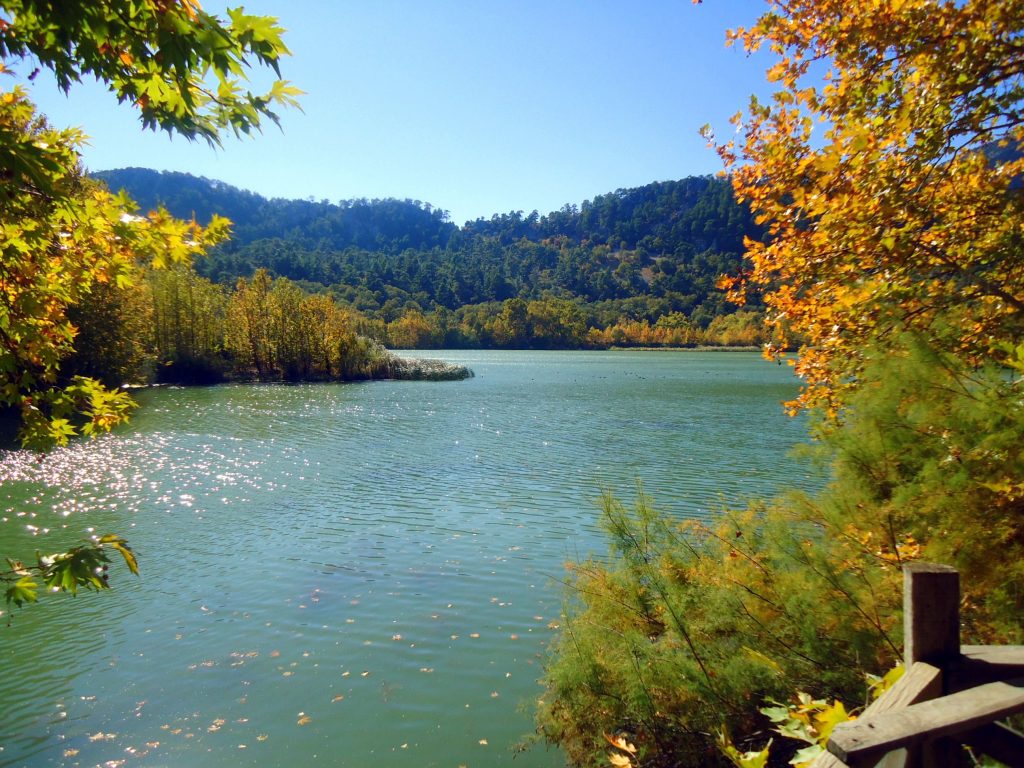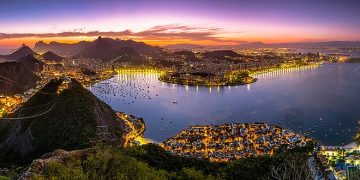Turkey, a mysterious country across the Eurasian continent, is not only famous for its long history and culture and rich cuisine, but also attracts the attention of tourists from all over the world because of its unique natural scenery and diverse ecosystem. In this vast land, there are many natural parks scattered, which are not only a concentrated display of natural beauty, but also a vivid practice of ecological protection and sustainable development. This article will introduce Turkey’s natural parks in depth, analyze their characteristics and charm, explore their contribution to local ecological conservation, and emphasize their important place in the World Natural Heritage.
I. Overview of natural parks in Turkey
1.1 Geographical location and historical background
Turkey is rich in natural resources, from the Black Sea coast in the east to the shores of the Aegean Sea in the west to the Mediterranean region in the south, with a diverse geography that fosters a rich and diverse ecosystem. Turkey has natural parks all over the country, from the Polonetzkoy Natural Park near Istanbul to the Gulkuk Natural Park in the Black Sea region to the Isparta Lake District in the south, each one exudes a unique natural charm.
The establishment of many natural parks is closely related to historical events. Polonezkoy Nature Park takes its name from the background of its Polish village, which was founded by Polish settlers who emigrated to the Ottoman Empire in the mid-19th century. The Golcuk Nature Park has become a resort for its natural beauty and rich hot spring resources, especially in winter, and its snow scenery is attracting countless tourists.

1.2 Introduction to main attractions
Polonezkoy Natural Park
Polonetzkoy Natural Park is located near Istanbul and is Istanbul’s first national park with an area of 3,000 hectares. Several Central European style wooden houses have been preserved in the park, most of which are used as retirement homes, restaurants or breakfast cafes. The park offers hiking and biking trails, as well as cultural centers, historic churches and memorials, making it ideal for short trips. In addition, the park’s carob, elm, alder, chestnut and lemon trees, as well as the storks and birds of prey that migrate here in autumn, together form a vivid natural picture.
Fatih Forest Natural Park
The Fatih Forest Nature Park is located in the Salieres district, covering about 150 acres, and is an ideal place for family trips. The park has a large children’s playground, providing a great setting for picnics, strolls and views. Every Saturday, the area also offers brunch, which serves traditional dishes such as rustic cheeses, homemade jams and fresh butter, allowing visitors to enjoy the beauty of nature while also tasting the authentic taste of Turkey.
Gulkuk Nature Park
Gulkuk Natural Park is located in the Black Sea province of Bolu and is known for its natural beauty and hot springs. Lake Abant and Yedigoller (seven Lakes) in the park are the main tourist attractions, and the winter snow is even more beautiful. In addition, the Bolu region is also rich in hot springs, with water temperatures ranging from 20 degrees Celsius to 90 degrees Celsius, providing visitors with a unique hot spring experience.
- Characteristics and charm of Turkish natural parks
2.1 Diversity of natural landscape
Turkey’s natural parks are famous for their diverse natural landscapes. From dense forests to clear lakes, from vast grasslands to magnificent snow-capped mountains, every natural park is a masterpiece of nature. The Mihalabat Nature Park near Istanbul, for example, not only offers outdoor recreational activities such as hiking and cycling, but also has open-air basketball courts, soccer fields and picnic areas, providing visitors with a wealth of entertainment options. Dilburnu Nature Park, on the island of Bihukada, attracts nature lovers with its terrace sea views and pine-covered picnic areas.
2.2 Practice of ecological protection
With Turkey’s application to join the European Union, the country has stepped up efforts to protect the environment, and the number of natural parks and protected areas has been increasing. At present, Turkey has 33 national parks, 16 natural parks and 35 nature reserves, which play an important role in ecological protection. Kure Mountains National Park, for example, is one of the largest protected natural areas in Turkey and is extremely rich in plant and animal species, with high economic and environmental value. The local public and conservation organizations work together to support the sustainable development of the area and promote the conservation of biodiversity through ecotourism projects.
2.3 Integration of cultural values
Turkey’s natural parks not only show the beauty of nature, but also integrate rich cultural values. Many of the historic buildings and cultural heritage within the park bear witness to Turkey’s long history and diverse culture. For example, the Central European-style wooden houses in Polonezkoy Nature Park not only bear witness to the history of Polish immigrants, but also provide visitors with a window into different cultures. In addition, the ancient churches, mosques and monuments in some natural parks are the embodiment of Turkey’s religious diversity.
Iii. The contribution of Turkish natural parks to local ecological protection and sustainable development
3.1 Demonstration of ecological protection
Turkey’s natural parks play an exemplary role in ecological protection. These areas maintain biodiversity and ecosystem stability through strict conservation measures. For example, ecotourism projects within Kur Mountain National Park not only provide unique experiences for visitors, but also raise public awareness of ecological conservation through education and awareness campaigns. These projects encourage visitors to respect nature and care for the environment, forming a good atmosphere of harmonious coexistence between man and nature.
3.2 Promotion of sustainable development
The development of the natural park promotes the sustainable development of the local economy. Through green industries such as eco-tourism, the nature park brings significant economic benefits to the surrounding area. Isparta province, for example, is known as the “garden” of Turkey, with its rose gardens and lavender fields attracting a large number of tourists, leading to the development of local agriculture and tourism. At the same time, these industries also provide employment opportunities for local residents and improve their living conditions.
3.3 Enhancement of community participation
The development of natural parks in Turkey focuses on the participation of local communities. By involving residents in the conservation of the natural environment, nature parks not only enhance community cohesion, but also increase residents’ sense of responsibility for ecological conservation. For example, in the area surrounding Kur Mountain National Park, local authorities and the park have carried out a series of educational activities to raise awareness among residents about the sustainable use of forest resources and the conservation of biodiversity. At the same time, through the development of eco-tourism projects, local residents have also gained economic benefits, further stimulating their enthusiasm to participate in ecological protection.
The importance of Turkish natural parks as World natural Heritage sites
4.1 Richness of the World Natural Heritage
Turkey is home to numerous natural sites inscribed on the World Heritage List, which are of global importance. For example, Nemrut Dag is one of the most ambitious buildings of the Greek period, and its legend of the unity of gods and royal lineage reflects the dual origins of the kingdom’s culture. In addition, the Neolithic Site of Catalhoyuk, as a witness to the evolution of human settlement, shows the unique history of how settled villages in the same location transformed into urban settlements.

4.2 Balance between ecological protection and tourism development
As a World Heritage Site, Turkey’s natural parks seek a balance between ecological protection and tourism development. These areas, while protecting the natural environment and cultural heritage, also provide visitors with unique experiences through rational tourism development. For example, Gulkuk Nature Park attracts a large number of tourists in winter with its snow and hot springs, and ecological protection measures within the park ensure the sustainable use of these natural resources. By limiting the number of visitors, setting up environmental signs and providing environmental education, nature parks promote tourism while protecting fragile ecosystems.
4.3 Display of unique value
Turkey’s natural parks show unique value in terms of tourism, ecological protection and cultural inheritance. These areas not only provide visitors with the opportunity to get close to nature and relax, but also inspire people’s awe of nature and culture through rich ecological experiences and cultural heritage displays. At the same time, the development of the natural park has also brought economic benefits and social welfare to the local community, and promoted the sustainable development of the regional economy.
Turkey’s natural parks enjoy a global reputation for their diverse natural landscapes, strict ecological protection measures and rich cultural values. These areas not only provide a unique tourist experience for tourists, but also make an important contribution to the sustainable development of the local economy and ecological protection. In the future, with the continuous improvement of environmental protection awareness in Turkey and the continuous development of the eco-tourism industry, Turkey’s natural parks will continue to play an important role in the field of global ecological protection and tourism development. At the same time, we also hope that more visitors can enter these halls of natural beauty, feel the magic charm of nature and participate in the practice of ecological protection.





















